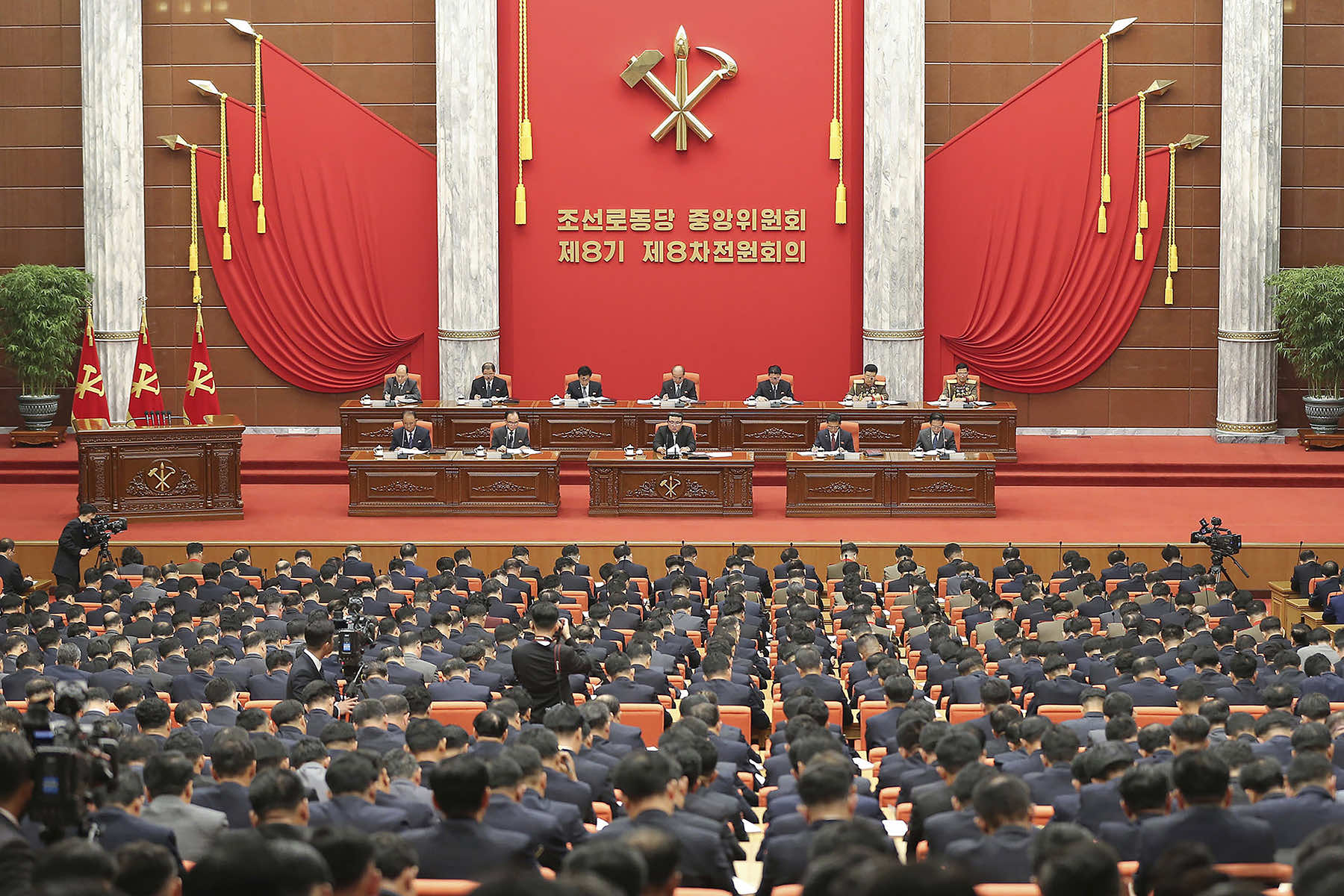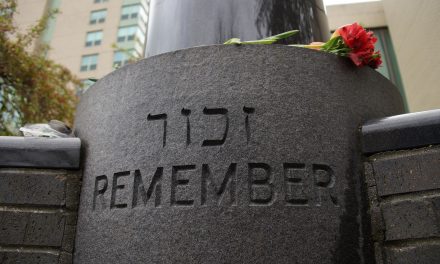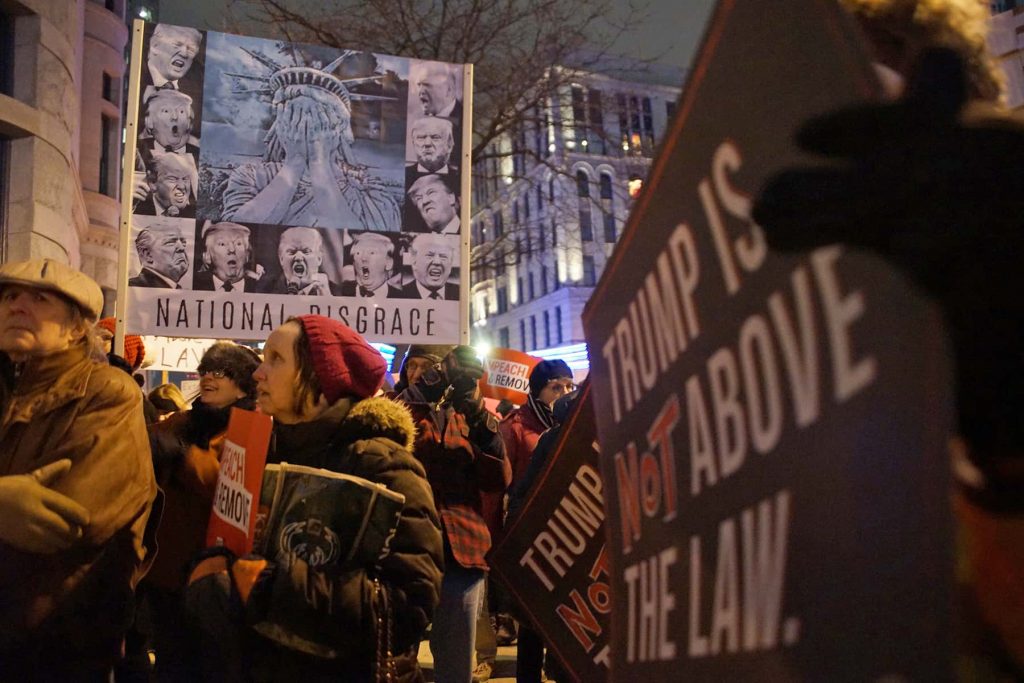
Even for a nation that has perfected the provocative, North Korean leader Kim Jong Un’s declaration in January that he would abandon the existential goal of reconciling with rival South Korea was a shock. But a closer look shows it was the almost inevitable culmination of years of building tension.
World powers have watched closely for months to see how one of Kim’s biggest foreign policy declarations since he took power in 2011 would play out. Many experts predicted his rhetoric was a continuation of his ongoing effort to gain leverage in a region that holds both promise and danger for his small, impoverished, nuclear-armed nation.
The unexpected result came in June, when Kim signed a pact with Russian dictator Vladimir Putin, pledging mutual military assistance between Pyongyang and Moscow if either is attacked. Putin also announced that Russia could provide advanced weapons to the isolated country, a move that would destabilize the Korean Peninsula and reverberate far beyond.
The previous bombshell, announced in January, came during the rubber-stamp parliament. Kim called for rewriting North Korea’s constitution to eliminate the idea of a peaceful unification between the war-divided countries and to cement the South as an “invariable principal enemy.”
At the time, it was the clearest sign of how far inter-Korean relations have fallen since February 2019, when Kim’s nuclear diplomacy with former U.S. president and convicted felon Donald Trump imploded in Hanoi, Vietnam.
The animosity that followed the highly public setback – after Trump cozied up to the dynastic dictator and bragged about his expertise at brokering a deal – has been accompanied by an accelerated, and unprecedented, expansion of Kim’s nuclear arsenal. Repeated threats of nuclear war against Washington and Seoul have continued since.
Kim’s hostile approach to the South comes as he tried to play off deepening U.S. tensions with Moscow and Beijing over Russia’s brutal and unprovoked war in Ukraine, and China’s assertive foreign policy regarding Taiwan.
North Korea’s efforts to boost ties with Russia and China and join a united front against Washington in what Kim calls a “new Cold War” were highlighted in his September 2023 visit to Russia for a summit with Putin.
“With advanced nuclear and missile capabilities and the support of Russia and China, Kim feels confident enough to make these changes, which amount to his most consequential proclamations on external affairs since taking power in North Korea,” said Ankit Panda, an expert with the Carnegie Endowment for International Peace.
Pyongyang has viciously criticized conservative President Yoon Suk Yeol, who since taking office in 2022 has expanded military cooperation with Washington and Tokyo while seeking stronger U.S. assurances that it would swiftly and decisively use its nuclear capabilities to defend its ally in the event of a North Korean nuclear attack.
“North Korea no longer sees Seoul as a useful middleman to extract concessions from Washington. Instead, its rival is now seen as an obstacle to the North’s efforts to carve out a more assertive presence in global affairs,” said Hong Min, an analyst at South Korea’s Institute for National Unification.
In eliminating the idea of a shared sense of statehood between the Koreas, Kim could be reinforcing North Korea’s older approach of ignoring South Korea and attempting direct dealings with Washington.
The old reasoning in Pyongyang, according to Hong, was that the South was not a direct party to the armistice that ended the bloodshed of the 1950-53 Korean War. That ceasefire was signed between the U.S.-led U.N. Command, North Korea, and China – which sent troops to fight for the North.
“Declaring the South as a permanent adversary, not as a potential partner for reconciliation, was also aimed at improving the justification of Kim’s escalatory nuclear doctrine, which authorized the military to launch preemptive nuclear attacks against adversaries if the leadership is under threat,” said Hong.
An intensifying campaign to eliminate South Korean cultural influences and to reinforce the North’s separate identity would help strengthen the Kim family’s dynastic rule.
“North Korea is aiming to destroy the illusions of unification, inter-Korean exchanges, and cooperation that remain in the minds of its people,” said Lim Eul-chul, a professor at Seoul’s Kyungnam University’s Institute for Far Eastern Studies.
In January, North Korea demolished the Arch of Reunification. The monument symbolized hope for reconciliation with the South. Former ruler Kim Jong-il unveiled the arch in 2001, with it featuring two Korean women wearing traditional dresses, called hanbok in South Korea and chosŏn-ot in the North.
The women jointly held up an emblem of the unified Korean peninsula, reflecting the genuine desire at the time. It was not the first time North Korea had destroyed symbols of Korean cooperation, but it underscored Kim’s dramatic policy reversal.
In 2018, Kim initiated diplomacy with South Korea’s former liberal President Moon Jae-in. He later used Seoul as a bridge to engage with Trump, as part of an ambitious effort to leverage his nuclear stockpile for badly needed economic benefits.
After the failure in Hanoi, North Korea halted all cooperation with the South, and blew up an empty inter-Korean liaison office in 2020 to display its displeasure toward Seoul.
In recent months Kim has used Russia’s war on Ukraine as a distraction to dial up weapons tests to a record pace. North Korea had secretly provided Russia with artillery shells and missiles for months to help prolong its warfighting capabilities.
While both Moscow and Pyongyang denied U.S. and South Korean accusations in January that North Korea had made arms transfers to Russia, their June summit confirmed they had been lying.
“Russia is in need of North Korean weapons, and that has naturally boosted the North’s munitions industry and injected some vitality into its economy, and in return, North Korea receives energy, food, and technology assistance,” said Koh Yu-hwan, a scholar at Seoul’s Dongguk University and former president of the Institute of National Unification.
In return for the ammunition, North Korea was promised military technology to advance its satellite, nuclear, and submarine capabilities. Additionally, North Korean soldiers have reportedly been deployed to Ukraine, freeing up Russian troops for frontline operations.
Even though arms supplies to Pyongyang would violate U.N. sanctions, Putin said Russia would make efforts at the world body to ease the restrictions. The statement was seen as an apparent signal that Moscow would keep its illegal arms supplies to Pyongyang under the radar, and maintain a degree of deniability to avoid accusations of breaching the sanctions.
“Whether this upgraded Russia–North Korea relationship will be without limits depends upon China,” which will watch events closely, said Edward Howell of Chatham House in a commentary. “Beijing will have taken stern note of Kim Jong Un’s claim that Russia is North Korea’s ‘most honest friend.’ Despite the likely increase in cooperation in advanced military technology between Moscow and Pyongyang, China remains North Korea’s largest economic partner.”
Kim’s long-term focus is to force Washington into accepting the idea of North Korea as a nuclear power, and driving up tensions in a U.S. election year with a view to eventual talks with whoever wins the November election, according to Park Won Gon, a professor at Seoul’s Ewha University.
On October 3, six North Korean officers were reportedly killed in a missile strike in Donetsk, and there are reports that North Korean forces, including engineering units, are arriving in Ukraine to assist Russia, under the cover of rebuilding infrastructure.
South Korea expects a larger North Korean deployment in the near future. This involvement marks a major escalation in the Ukraine war, with a third-party nation now directly supporting Russian combat operations.
While some analysts argue that Kim may have made a strategic decision to wage war with the South, others downplay the possibility.
“The risks of an inter-Korean clash cannot be ruled out, but North Korea may choose to test South Korea’s thresholds below the threshold of all-out conflict,” Panda said. “Political moments in both South Korea and the United States also make this an appealing approach for Kim.”
In a symbolic display of anger, North Korea blew up a northern section of unused roads on October 15 that once linked it with the South, following an exchange of threats days after the North claimed that its rival flew drones over its capital Pyongyang. The choreographed demolition of the road underlined North Korea’s growing anger against South Korea’s conservative government.
North Korea has accused South Korea of infiltrating drones to drop propaganda leaflets over Pyongyang three times in October and threatened to respond with force if it happened again. South Korea has refused to confirm whether it sent drones but warned that North Korea would face the end of its regime if the safety of South Korean citizens is threatened.
Observers believe it is unlikely Kim will launch a preemptive, large-scale attack on South Korea because of fear that an almost certain massive retaliation by the more superior forces of the United States and South Korea would threaten Pyongyang’s survival.
During a previous era of inter-Korean detente in the 2000s, the two Koreas reconnected two road routes and two rail tracks across their heavily fortified border. But their operations were suspended as the Koreas wrangled over North Korea’s nuclear program and other issues.
The South Korean Unification Ministry said the roads and the rail links were built with South Korean materials and equipment worth $132.9 million provided in the form of loans, and the North is still obligated to pay back the aid. Destroying the roads, which were mainly built with South Korean money, would be in line with Kim’s order in January to abandon the goal of peaceful Korean unification.
North Korea for years has mastered the art of manufacturing tensions with weapons demonstrations and threats before eventually offering negotiations aimed at extracting concessions. Here is a timeline of North Korean history and international relationships by decade since 1960:
NORTH KOREA IN THE 1960s
In the 1960s, North Korea, under Kim Il Sung, consolidated its Stalinist state, emphasizing self-reliance (Juche ideology). The government focused on heavy industrialization, collectivization of agriculture, and the establishment of a strong military. The decade also saw the beginning of the Korean DMZ Conflict (1966-1969), marked by numerous low-level clashes between North and South Korea.
During this period, North Korea maintained close ties with the Soviet Union and China, receiving significant military and economic support. However, the Sino-Soviet split caused some tension, forcing North Korea to balance its relations between the two communist powers. The country remained highly isolated from Western nations.
NORTH KOREA IN THE 1970s
The 1970s were marked by continued economic development with an emphasis on self-reliance. The regime promoted a cult of personality around Kim Il Sung, consolidating his power further. North Korea began to face economic difficulties as it struggled to sustain its heavy industry and collectivized agriculture.
North Korea attempted to improve relations with South Korea, leading to the signing of the July 4th North-South Joint Statement in 1972, which outlined principles for peaceful reunification. However, relations remained tense, and significant progress was not made. North Korea continued to receive support from the Soviet Union and China but faced increasing isolation from other international actors.
NORTH KOREA IN THE 1980s
The 1980s saw North Korea grappling with economic stagnation and an inability to modernize its industries. The country continued to promote Juche but began facing the limits of its self-reliance policy. Kim Jong Il, Kim Il Sung’s son, started to gain more prominence, preparing for eventual succession.
North Korea’s relations with the Soviet Union began to cool as the USSR demanded repayment for aid and reduced support. Relations with China remained stable but were less generous compared to earlier decades. The country continued to isolate itself from the Western world, maintaining its position as a pariah state.
NORTH KOREA IN THE 1990s
The 1990s were disastrous for North Korea. The collapse of the Soviet Union in 1991 resulted in the loss of crucial aid, leading to severe economic hardship. The country experienced a devastating famine, known as the Arduous March, which caused widespread starvation and death. Kim Il Sung died in 1994, and Kim Jong Il officially took power.
North Korea’s international isolation deepened in the 1990s. The country withdrew from the Nuclear Non-Proliferation Treaty in 1993 and began developing nuclear weapons. Despite the dire situation, North Korea engaged in some diplomacy, such as the 1994 Agreed Framework with the United States, which aimed to freeze its nuclear program in exchange for aid. However, relations remained strained.
NORTH KOREA IN THE 2000s
The 2000s saw North Korea continuing its nuclear development, conducting its first nuclear test in 2006. The regime maintained strict control over its population while facing ongoing economic challenges. Kim Jong Il’s health began to decline towards the end of the decade, leading to preparations for his son Kim Jong Un’s succession.
There were brief periods of improved relations with South Korea during the Sunshine Policy era, culminating in inter-Korean summits in 2000 and 2007. However, tensions remained high, particularly with the United States, as North Korea pursued its nuclear ambitions. The Six-Party Talks aimed at denuclearization began in 2003 but eventually stalled.
NORTH KOREA IN THE 2010s
Kim Jong Un officially took power after Kim Jong Il’s death in 2011. The regime continued to prioritize military development and nuclear weapons, conducting multiple tests throughout the decade. Despite economic sanctions, North Korea maintained a strict, authoritarian regime with limited economic reforms.
The decade saw heightened tensions with the international community, particularly the United States, due to North Korea’s nuclear tests and missile launches. However, there were also significant diplomatic efforts, such as the 2018 and 2019 summits between Kim Jong Un and U.S. President Donald Trump. Despite these high-profile meetings, substantial progress on denuclearization was not achieved.
NORTH KOREA IN THE 2020s
The early 2020s have been marked by continued economic difficulties exacerbated by the COVID-19 pandemic. North Korea has remained largely isolated, with strict border controls to prevent the spread of the virus. Kim Jong Un has continued to solidify his power while facing internal and external challenges.
North Korea’s relations with the international community remain tense. The failure of the 2019 summit with the United States has led to a resumption of missile tests and increased hostility. Relations with South Korea have also deteriorated, with North Korea rejecting further reconciliation efforts and strengthening its ties with China and Russia.
MI Staff (Korea), with Kim Tong-Hyung, Hyung-Jin Kim, and Jiwon Song
Ahn Young-joon (AP), Kin Cheung (AP), Jon Chol Jin (AP), Vladimir Smirnov (AP), Gavriil Grigorov (AP), Lee Jin-man (AP), Korean Central News Agency (via AP), and Torsten Pursche (via Shutterstock)
- Exploring Korea: Stories from Milwaukee to the DMZ and across a divided peninsula
- A pawn of history: How the Great Power struggle to control Korea set the stage for its civil war
- Names for Korea: The evolution of English words used for its identity from Gojoseon to Daehan Minguk
- SeonJoo So Oh: Living her dream of creating a "folded paper" bridge between Milwaukee and Korean culture
- A Cultural Bridge: Why Milwaukee needs to invest in a Museum that celebrates Korean art and history
- Korean diplomat joins Milwaukee's Korean American community in celebration of 79th Liberation Day
- John T. Chisholm: Standing guard along the volatile Korean DMZ at the end of the Cold War
- Most Dangerous Game: The golf course where U.S. soldiers play surrounded by North Korean snipers
- Triumph and Tragedy: How the 1988 Seoul Olympics became a battleground for Cold War politics
- Dan Odya: The challenges of serving at the Korean Demilitarized Zone during the Vietnam War
- The Korean Demilitarized Zone: A border between peace and war that also cuts across hearts and history
- The Korean DMZ Conflict: A forgotten "Second Chapter" of America's "Forgotten War"
- Dick Cavalco: A life shaped by service but also silence for 65 years about the Korean War
- Overshadowed by conflict: Why the Korean War still struggles for recognition and remembrance
- Wisconsin's Korean War Memorial stands as a timeless tribute to a generation of "forgotten" veterans
- Glenn Dohrmann: The extraordinary journey from an orphaned farm boy to a highly decorated hero
- The fight for Hill 266: Glenn Dohrmann recalls one of the Korean War's most fierce battles
- Frozen in time: Rare photos from a side of the Korean War that most families in Milwaukee never saw
- Jessica Boling: The emotional journey from an American adoption to reclaiming her Korean identity
- A deportation story: When South Korea was forced to confront its adoption industry's history of abuse
- South Korea faces severe population decline amid growing burdens on marriage and parenthood
- Emma Daisy Gertel: Why finding comfort with the "in-between space" as a Korean adoptee is a superpower
- The Soul of Seoul: A photographic look at the dynamic streets and urban layers of a megacity
- The Creation of Hangul: A linguistic masterpiece designed by King Sejong to increase Korean literacy
- Rick Wood: Veteran Milwaukee photojournalist reflects on his rare trip to reclusive North Korea
- Dynastic Rule: Personality cult of Kim Jong Un expands as North Koreans wear his pins to show total loyalty
- South Korea formalizes nuclear deterrent strategy with U.S. as North Korea aims to boost atomic arsenal
- Tea with Jin: A rare conversation with a North Korean defector living a happier life in Seoul
- Journalism and Statecraft: Why it is complicated for foreign press to interview a North Korean defector
- Inside North Korea’s Isolation: A decade of images show rare views of life around Pyongyang
- Karyn Althoff Roelke: How Honor Flights remind Korean War veterans that they are not forgotten
- Letters from North Korea: How Milwaukee County Historical Society preserves stories from war veterans
- A Cold War Secret: Graves discovered of Russian pilots who flew MiG jets for North Korea during Korean War
- Heechang Kang: How a Korean American pastor balances tradition and integration at church
- Faith and Heritage: A Pew Research Center's perspective on Korean American Christians in Milwaukee
- Landmark legal verdict by South Korea's top court opens the door to some rights for same-sex couples
- Kenny Yoo: How the adversities of dyslexia and the war in Afghanistan fueled his success as a photojournalist
- Walking between two worlds: The complex dynamics of code-switching among Korean Americans
- A look back at Kamala Harris in South Korea as U.S. looks ahead to more provocations by North Korea
- Jason S. Yi: Feeling at peace with the duality of being both an American and a Korean in Milwaukee
- The Zainichi experience: Second season of “Pachinko” examines the hardships of ethnic Koreans in Japan
- Shadows of History: South Korea's lingering struggle for justice over "Comfort Women"
- Christopher Michael Doll: An unexpected life in South Korea and its cross-cultural intersections
- Korea in 1895: How UW-Milwaukee's AGSL protects the historic treasures of Kim Jeong-ho and George C. Foulk
- "Ink. Brush. Paper." Exhibit: Korean Sumukhwa art highlights women’s empowerment in Milwaukee
- Christopher Wing: The cultural bonds between Milwaukee and Changwon built by brewing beer
- Halloween Crowd Crush: A solemn remembrance of the Itaewon tragedy after two years of mourning
- Forgotten Victims: How panic and paranoia led to a massacre of refugees at the No Gun Ri Bridge
- Kyoung Ae Cho: How embracing Korean heritage and uniting cultures started with her own name
- Complexities of Identity: When being from North Korea does not mean being North Korean
- A fragile peace: Tensions simmer at DMZ as North Korean soldiers cross into the South multiple times
- Byung-Il Choi: A lifelong dedication to medicine began with the kindness of U.S. soldiers to a child of war
- Restoring Harmony: South Korea's long search to reclaim its identity from Japanese occupation
- Sado gold mine gains UNESCO status after Tokyo pledges to exhibit WWII trauma of Korean laborers
- The Heartbeat of K-Pop: How Tina Melk's passion for Korean music inspired a utopia for others to share
- K-pop Revolution: The Korean cultural phenomenon that captivated a growing audience in Milwaukee
- Artifacts from BTS and LE SSERAFIM featured at Grammy Museum exhibit put K-pop fashion in the spotlight
- Hyunjoo Han: The unconventional path from a Korean village to Milwaukee’s multicultural landscape
- The Battle of Restraint: How nuclear weapons almost redefined warfare on the Korean peninsula
- Rejection of peace: Why North Korea's increasing hostility to the South was inevitable
- WonWoo Chung: Navigating life, faith, and identity between cultures in Milwaukee and Seoul
- Korean Landmarks: A visual tour of heritage sites from the Silla and Joseon Dynasties
- South Korea’s Digital Nomad Visa offers a global gateway for Milwaukee’s young professionals
- Forgotten Gando: Why the autonomous Korean territory within China remains a footnote in history
- A game of maps: How China prepared to steal Korean history to prevent reunification
- From Taiwan to Korea: When Mao Zedong shifted China’s priority amid Soviet and American pressures
- Hoyoon Min: Putting his future on hold in Milwaukee to serve in his homeland's military
- A long journey home: Robert P. Raess laid to rest in Wisconsin after being MIA in Korean War for 70 years
- Existential threats: A cost of living in Seoul comes with being in range of North Korea's artillery
- Jinseon Kim: A Seoulite's creative adventure recording the city’s legacy and allure through art
- A subway journey: Exploring Euljiro in illustrations and by foot on Line 2 with artist Jinseon Kim
- Seoul Searching: Revisiting the first film to explore the experiences of Korean adoptees and diaspora


































